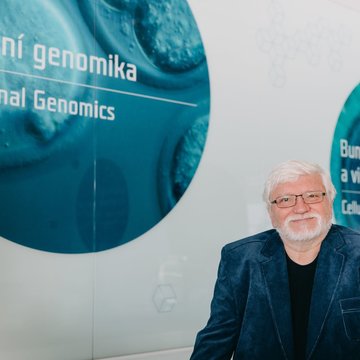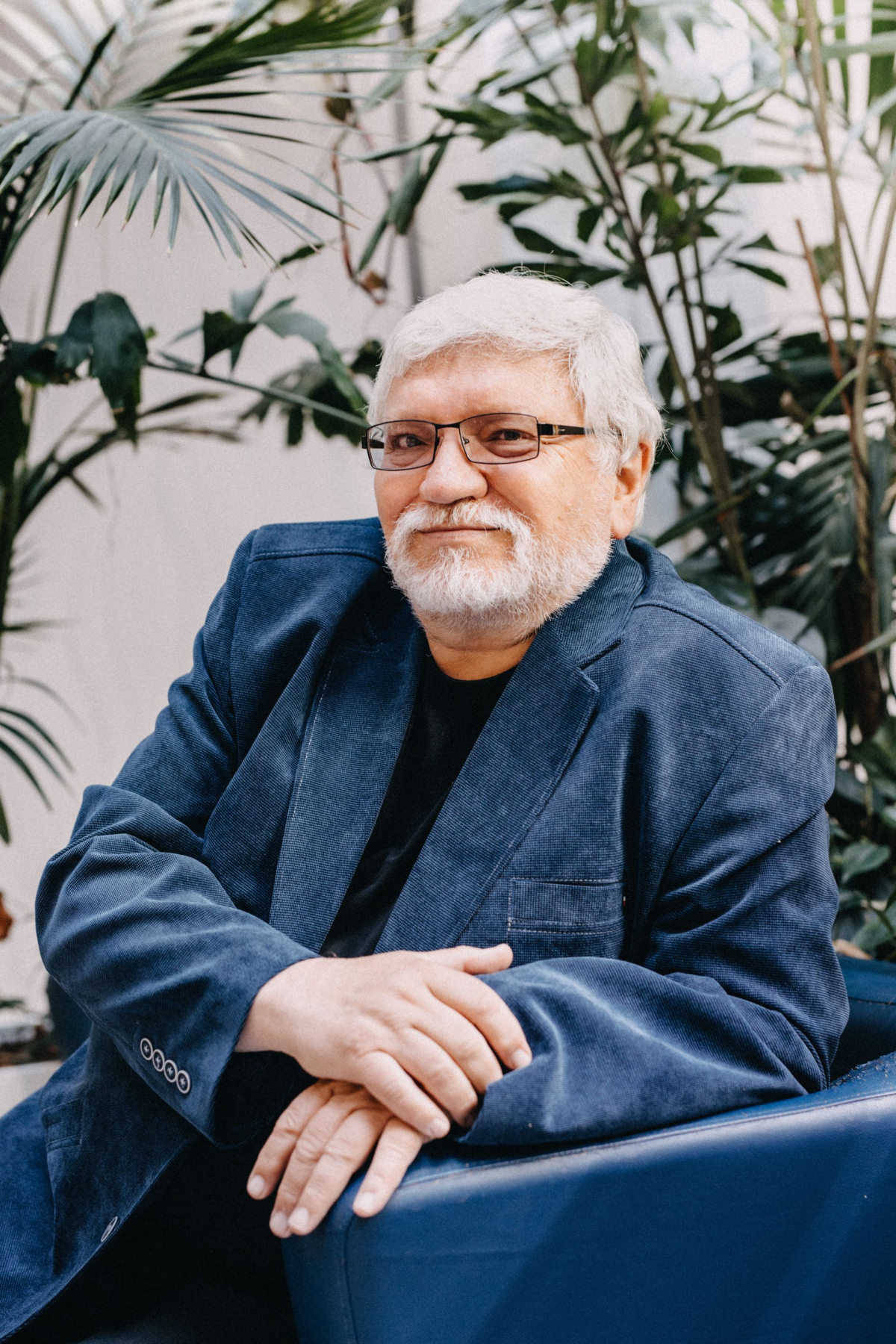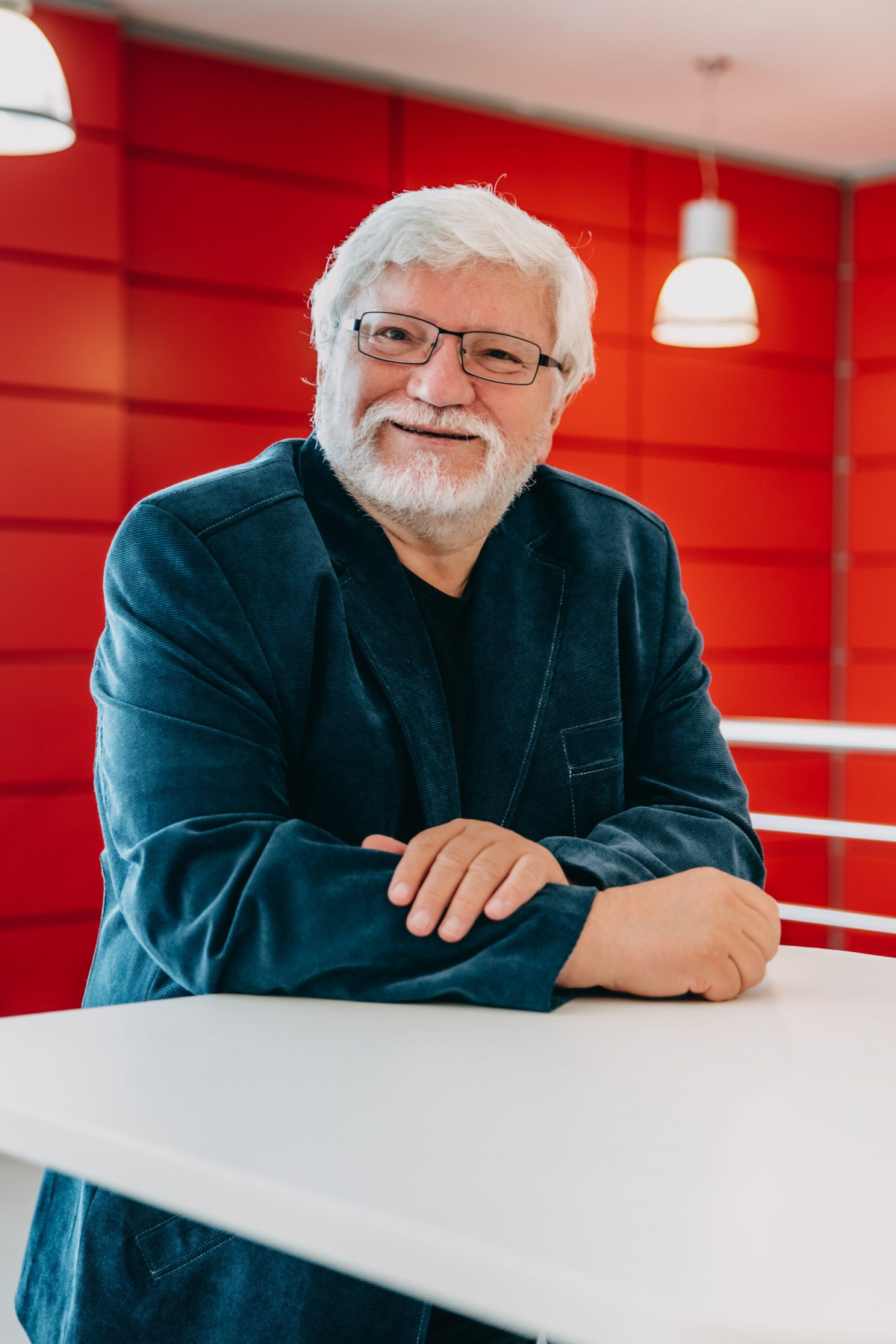
The first five years of BIOCEV activity have raised the status of Czech science
The Scientific Director of BIOCEV, Prof. Pavel Martásek, MD, DrSc., talks about the first five years of the existence of the research centre, a unique research unit within the European infrastructure. He wishes young and starting researchers a great deal of enthusiasm and fascination for the object of their scientific interest. According to him, significantly easier mobility within the 'European Research Area' provides advantages and help in their professional development.
We are meeting as the BIOCEV research centre turns five. When you look back at the time when this project that involves many researchers was officially launched, how do you perceive the past period?
Above all, it was a huge challenge to build a top research institution in the Czech Republic that would specialise in biotechnology and biomedicine. We have successfully managed to do. In the Czech Republic, and I dare say throughout the entire EU, BIOCEV is a unique workplace in that it involves six institutes of the Czech Academy of Sciences and two faculties of Charles University. Among them is the First Faculty of Medicine of the Charles University, which I am personally very pleased about. Our teams regularly publish in leading journals, patent their discoveries, pass on their experience to students and young researchers, and contribute significantly to the overall prestige of BIOCEV and Czech science.
How has BIOCEV’s work raised the status of Czech science?
Thanks to national and European investments into large research centres such as BIOCEV and five other centres, the level of Czech science has really improved. Among other things, this is thanks to the state-of-the-art equipment, comparable to that you can find at other prestigious centres around the world. Another milestone was the involvement of laboratories in international research consortia, which increases the level of their expertise and efficiency, and strengthens their importance within the international research environment. I am also happy that it has been possible to attract a number of seasoned researchers from abroad, including Czechs who have gone abroad to gain experience, so to speak.
You have been with BIOCEV since its beginning and you have been its Scientific Director since 2021. What do you enjoy most about your work?
Personally, I am most pleased with the joint scientific projects that are being implemented together with academic and university teams, BIOCEV's involvement in national and international programmes, strong support from the municipality of Vestec, the Central Bohemian Region and many other partners from the Czech Republic and abroad. There is really a lot that makes me happy. Even “little things” such as discussions held over a good lunch in our cafeteria. I am happy for the numerous regular seminars, conferences and workshops. Traditionally, we have had a number of important delegations come to visit us. Biocev is always a great and pleasant surprise to them.
BIOCEV prides itself on the sharing of expensive laboratory equipment, enabling joint research opportunities to scientists from different fields. What kinds of teams comes to mind?
For example, the research conducted by Prof. Jan Brábek from the Faculty of Science and Dr. Jaroslav Truksa from the Institute of Biotechnology of the Czech Academy of Sciences is a clear example of expertise interconnection within BIOCEV. Both laboratories are collaborating on several projects that are conducting research into links between tumour metabolism and cancer cell invasiveness.

What about the Centre of Tumour Ecology (CTE)?
Yes, this centre is another example of successful networking between various partners at BIOCEV. Experts across different disciplines have come together to better understand how tumours grow and why they metastasize- Together, they are researching cells surrounding tumours. They are looking for new treatments for some forms of cancer for which the current ones are not working very well. They have received a major European grant for their work. The project was initiated by the First Faculty of Medicine of Charles University, which is cooperating with the Faculty of Science of Charles University and the Academy of Sciences of the Czech Republic. The head of the CTE, Prof. Karel Smetana, also has a detached workplace in BIOCEV.
Can you describe, in simple terms, your research teams, what they do and what results they have achieved over the past five years?
BIOCEV’s research programmes cover functional genomics, cell biology and virology, structural biology and protein engineering, biomaterials and tissue engineering, and the development of diagnostic and therapeutic procedures. Looking at our long list of achievements, I can mention, and this list is by now means exhaustive, the discovery of an effective anticancer agent, new antibiotics, innovative methods to increase the chances of IV fertilisation, the molecular basis of Netherton syndrome, the concept of migrastatics, the nano-formulation of a number of drugs, the discovery of organisms without mitochondria, and the collaborative development of a dual-specific antibody that simultaneously targets two independent sites in the SARS-CoV-2 virus structure . These discoveries are often subjects of patented outputs.
Who evaluates their success and how?
In short, publications, patents and industrial designs are easily measurable outputs, and the scientific boards of individual BIOCEV units also play an important role. The centre’s achievements to date can be assessed as very successful.
One specific output of the scientific research conducted at BIOCEV is Alaptide. How was the substance discovered? On what principle does Alaptide work and who will it help?
Alaptide was prepared around 1985 by two prominent staff members from the now defunct Institute of Pharmacy and Biochemistry, Ing. Evžen Kasafirk and Dr. Václav Plaisner. Alaptide binds two amino acids in a very interesting spatial arrangement, which guarantees its excellent regenerative and healing properties. The original research was followed up around 2010 by organic chemist and nano-technologist Prof. Vladimír Král. Using new approaches and technologies, he managed to significantly innovate the complicated synthesis. Alaptide in combination with other peptides and additives is important in wound healing, triggers regenerative processes, and also positively affects the functioning of the immune system.

The preparation and commercial exploitation of Alaptide was also successful thanks to Charles University Innovations Prague (CUIP), an enterprise founded by the university that is in charge of transferring technology. How do you perceive this enterprise?
The establishment of CUIP in 2018 as a subsidiary of Charles University for knowledge and technology transfer was a very significant achievement reached by the management of Charles University. CUIP provides an important platform for holding discussions between Charles University researchers and industry. The transfer process comes with many pitfalls that the originator of a discovery often has no idea about. Research and industry often speak different languages. CUIP provides research teams with commercialisation of their results, an analysis of their practical application, an industrial property protection strategy, and contractual support for collaboration with the application sector. Increasing the level of awareness of services and technologies that Czech research centres can offer also contributes to a greater level of interconnection.
Let us now talk about the connection between BIOCEV and the First Faculty of Medicine of Charles University. How does the cooperation work and how do the institutions enrich each other?
The Faculty has laboratories in BIOCEV and they form an independent institute of the First Faculty of Medicine, Charles University, headed by Prof. Tomáš Stopka. The institute includes the laboratories of Prof. Stopka, Doc. Jiří Petrák, Ing. Milan Jakubek, Mgr. Miroslav Hons, Mgr. Peter Dráber, and Dr. Zdeněk Kostrouch. Furthermore, the First Faculty of Medicine is represented by detached laboratories (Prof. Stanislav Kmoch/Dr. Marie Zikánová, Prof. Karel Smetana, Dr. Zora Mělková). Biomedical research has been successfully developed at BIOCEV and research groups have established cooperation with institutes and clinics of the 1st Faculty of Medicine of Charles University on various projects. This is a logical step if we want to significantly accelerate the introduction of new technologies into clinical practice. Research and medical teams participate in grant competitions and have been working on joint projects for a long time. In addition to clinics, they also collaborate with purely commercial entities, which has resulted in the filing of important patent applications.
The First Faculty of Medicine of Charles University organises an annual student scientific conference. One of its tasks is to bring students as close as possible to science at the faculty. Do students of the First Faculty of Medicine have the opportunity to find a place in one of BIOCEV's laboratories?
In addition to their research work, BIOCEV researches are involved in teaching students, starting at the Bachelor´s degree level. Last year, we also launched the BIOCEV Ph.D. programme, which is part of the post-graduate programme in biotechnology and biomedicine. The individual branches of study are organised by their respective subject-matter councils, whose members are distinguished experts from both Charles University and the Czech Academy of Sciences.
And at this year's 22nd Student Scientific Conference organised by the First Faculty of Medicine, Charles University, postgraduate students from BIOCEV placed first in the presentation section (Dr. Václav Heřman from Dr. Ondřej Havránek’s laboratory) and in the poster section (Mgr. Michaela Štvrdlíková from Doc. Jiří Petrák’s laboratory).
Today's young researchers certainly have incomparably better working conditions. What else has changed for the new scientific generations since that the time you started in science?
What is necessary and defining for starting scientists today has not changed from what was important to my generation: passion for the object of interest, I am not afraid to call it fascination, and full concentration. It almost always means leaving one’s comfort zone. Science is a continuum of sub-challenges that, when addressed, allow you to put together a mosaic of previously undescribed avenues and open up new horizons. It is not always straightforward; you have to be prepared for the possibility of failure. I have experienced being overtaken in the publication of results. It is hard to prove that you had them first, and perhaps yours were even better. You need to move on.
In another project, after three years of hard work, I was rewarded by being the first person ever to “see” the coproporphyrinogen oxidase gene, hundreds of letters representing different nucleotides, as well as the product of that gene – a pure protein – and I was present when its crystals were described. Things are easier for a researcher starting today in the sense that a 'European Research Area' has gradually been created and the mobility of young researchers is much easier, which undoubtedly encourages their professional development. The methodological portfolio of today's young researchers is greater than it was in my early days.
One area of your scientific interest is research into inherited disorders of haem metabolism, which manifest as serious diseases called porphyria. How have you been involved in elucidating the mechanisms of these diseases?
Haem is a red blood pigment, and it is an important prerequisite for human life. Haem is produced by a cascade of eight successive enzymatic reactions. Within this synthetic cascade, hereditary defects can occur that clinically manifest as serious diseases, sometimes life-threatening, with a range of symptoms from abdominal pain to skin manifestations. We have described some rare types of porphyrias, determined their molecular causes, identified the structure of the disease protein whose mutation causes the disease, and searched for effective treatments. Haem is also a key part of hemoproteins. These includes enzymes that enable the synthesis of gaseous signalling molecules. We have clarified the mechanism of nitric oxide formation by describing the complicated structure of the enzyme nitric oxide synthase. These research achievements have been widely cited.
The laboratories at BIOCEV were involved in the examination of covid-19. Was it more of an “operational” laboratory activity/testing or did the researchers increase their knowledge of the virus as well?
The pandemic has shown that we are able to respond quickly to global challenges. Together with other research institutes, we promptly participated in testing and significantly contributed to the management of the crisis situation. At that time, over one hundred volunteers from among BIOCEV’s employees signed up to help us. They helped with both infectious and non-infectious materials, isolation and RNA manipulation, the PCR method, administration and logistics. A huge advantage was that they were already trained and had experience with the manual isolation of samples, detection and operation of instruments. In a very short time, scientific teams were mobilized to discover a huge amount of information about the new strain of coronavirus. This helped both with forming a defence and an attack. For example, this resulted in intensive testing and sequencing as well as the rapid development and validation of new vaccines and drugs against covid-19.
Generally speaking, where are current scientific knowledge and assumptions slowly but surely leading us?
Peter Ferdinand Drucker, regarded as the founder of modern management, states in his work called A Functioning Society that this century will be characterised by the development of a knowledge economy supported by a combination of individual disciplines. The knowledge economy is driven forward by ideas and innovation. This pandemic will end one day, but cancer, cardiovascular diseases, diabetes, infectious diseases, a huge group of congenital genetic diseases and reproductive disorders will remain. Anyway, I remain optimistic in this area of research as well.
In the past, we were only able to describe these problems without being able to find their root causes. Today, we can understand the cause of a disease, right down to the molecular level. Thanks to that, we are able to design a solution which, in the final phase, may lead to the development of effective medications or the discovery of a new therapeutical method, thereby saving many lives.
Where is BIOCEV heading now in this respect?
I think that over the five years of its operation, it can be clearly said that BIOCEV has established itself as a European scientific infrastructure that is attracting many young people who are doing their PhD studies here. I am convinced that BIOCEV has started to assert its position as a first class scientific and research centre and meets all prerequisites to continue playing this role in the future. Endowed with superb instruments and equipment, BIOCEV brings together enthusiastic teams of well-trained scientists from the Czech Academy of Sciences and Charles University. I wish BIOCEV a continued fruitful journey in the years to come.
Source: Bulletin Jednička 4/2021, First Faculty of Medicine, Charles University, author: Petra Klusáková
| Professor Pavel Martásek is one of the important figures of Czech biomedical science. He is a member of the Learned Society of the Czech Republic and the Czech Academy of Medicine, a holder of the Gold Medal of Charles University and the Donatio Universitatis Carolinae Award. He researches the diagnosis and treatment of inherited metabolic disorders, intrinsic stress, and related diseases, and is working on the design and development of drugs associated with endothelial dysfunction. He has significantly contributed to the clarification of molecular mechanisms of inherited disorders of haem metabolism. |
